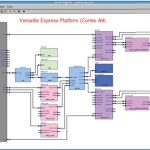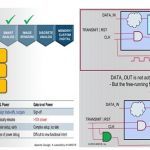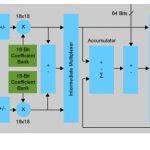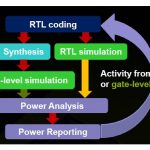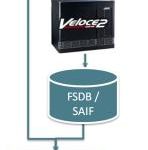Yes, it means complete hardware and software integration, debugging, verification, optimization of performance and power and all other operational aspects of an electronic system in semiconductor design. In modern SoCs, several IPs, RTL blocks, software modules, firmware and so on sit together on a single chip, hence making… Read More
Tag: rtl
Early Test –> Less Expensive, Better Health, Faster Closure
I am talking about the health of electronic and semiconductor design, which if made sound at RTL stage, can set it right for the rest of the design cycle for faster closure and also at lesser cost. Last week was the week of ITC(International Test Conference) for the Semiconductor and EDA community. I was looking forward to what ITC… Read More
Cadence Introduces Palladium XP II
Well, despite all the arguments in the blogosphere about what process node palladium’s silicon is, and whether the design team is competent, and why it reports into sales…Cadence has announced their latest big revision of Palladium. Someone seems to be able to get things done. Of course it is bigger and faster and … Read More
Reliability sign-off has several aspects – One Solution
Here, I am talking about reliability of chip design in the context of electrical effects, not external factors like cosmic rays. So, the electrical factors that could affect reliability of chips could be excessive power dissipation, noise, EM (Electromigration), ESD (Electrostatic Discharge), substrate noise coupling and… Read More
Innovation + Thoughtful Management = Productive Expansion
After looking at various aspects of this company, to sum up, I couldn’t find any better statement than this; thoughtful management here is actually leadership with passion which achieves tangible results. This reflects in the methodology of doing things in this company which has given it a place among top EDA companies in a span… Read More
RTL Design For Power
My Samsung Galaxy Note II lasts about two days on a single battery charge, which is quite the improvement from the Galaxy Note I with only a one day battery charge. Mobile SoCs are being constrained by battery life limitations, and consumers love longer-laster devices.
There are at least two approaches to Design For Power:
- Gate-level
From Layout Sign-off to RTL Sign-off
This week, I had a nice opportunity meeting Charu Puri, Corporate Marketing and Sushil Gupta, V.P. & Managing Director at Atrenta, Noida. Well, I know Sushil since 1990s; in fact, he was my manager at one point of time during my job earlier than Cadence. He leads this large R&D development centre, consisting about 200 people… Read More
The fixed and the finite: QoR in FPGAs
There is an intriguingly amorphous term in FPGA design circles lately: Quality of Results, or QoR. Fitting a design in an FPGA is just the start – is a design optimal in real estate, throughput, power consumption, and IP reuse? Paradoxically, as FPGAs get bigger and take on bigger signal processing problems, QoR has become a larger… Read More
Efficient Power Analysis and Reduction at RTL Level
It’s a classic and creative example of design and EDA tool community getting together, exploiting tool capabilities and developing flows which add value to all stake holders including the end consumer. We know power has become extremely important for battery life in smart phones, high performance servers, workstations, notebooks… Read More
Atrenta: Mentor/Spyglass Power Signoff…and a Book
Today Atrenta and Mentor announced that they were collaborating to enable accurate, signoff quality power estimation at the RTL for entire SoCs. The idea is to facilitate RTL power estimation for designs of over 50M gates running actual software loads over hundreds of millions of cycles, resulting in simulation datasets in the… Read More


